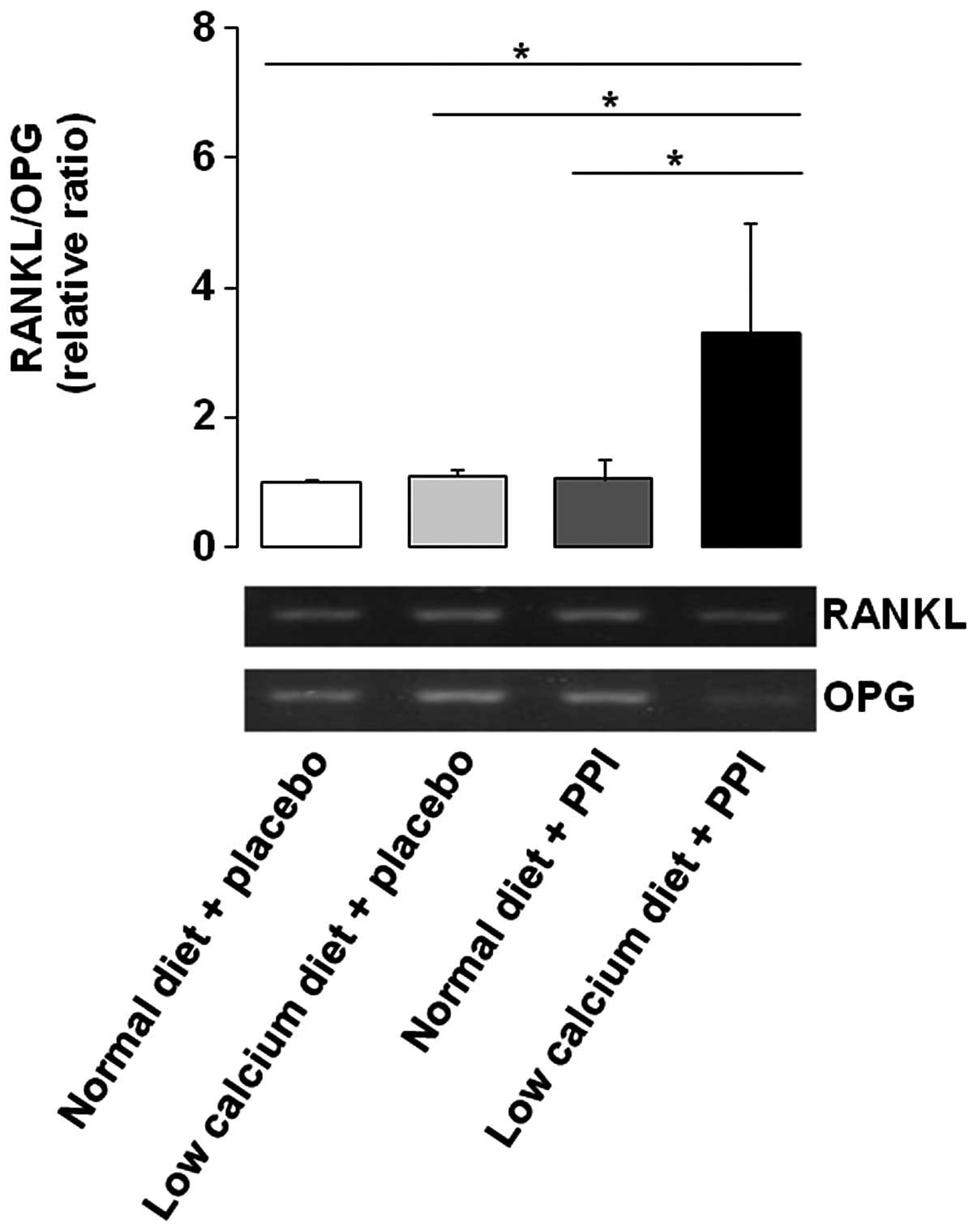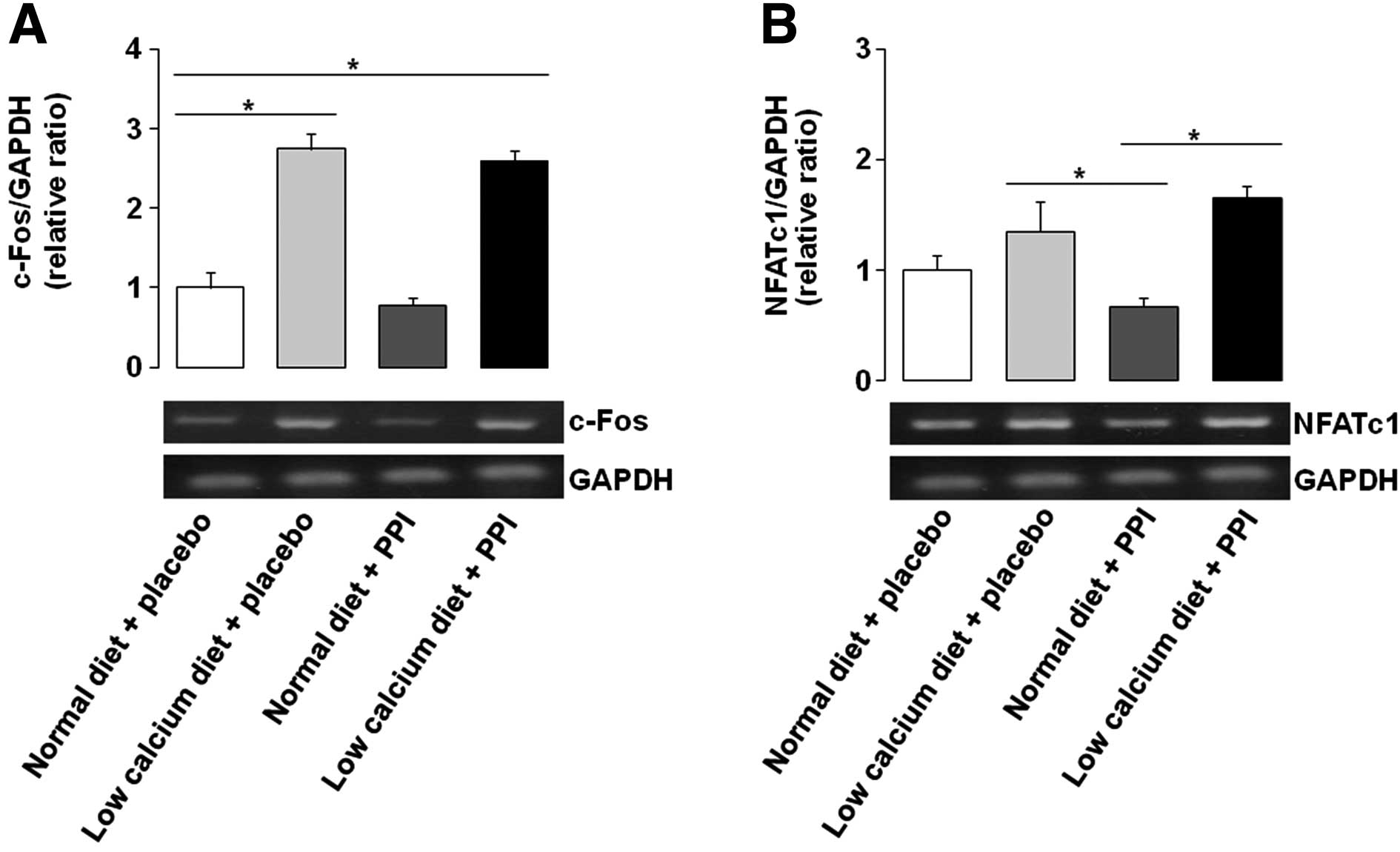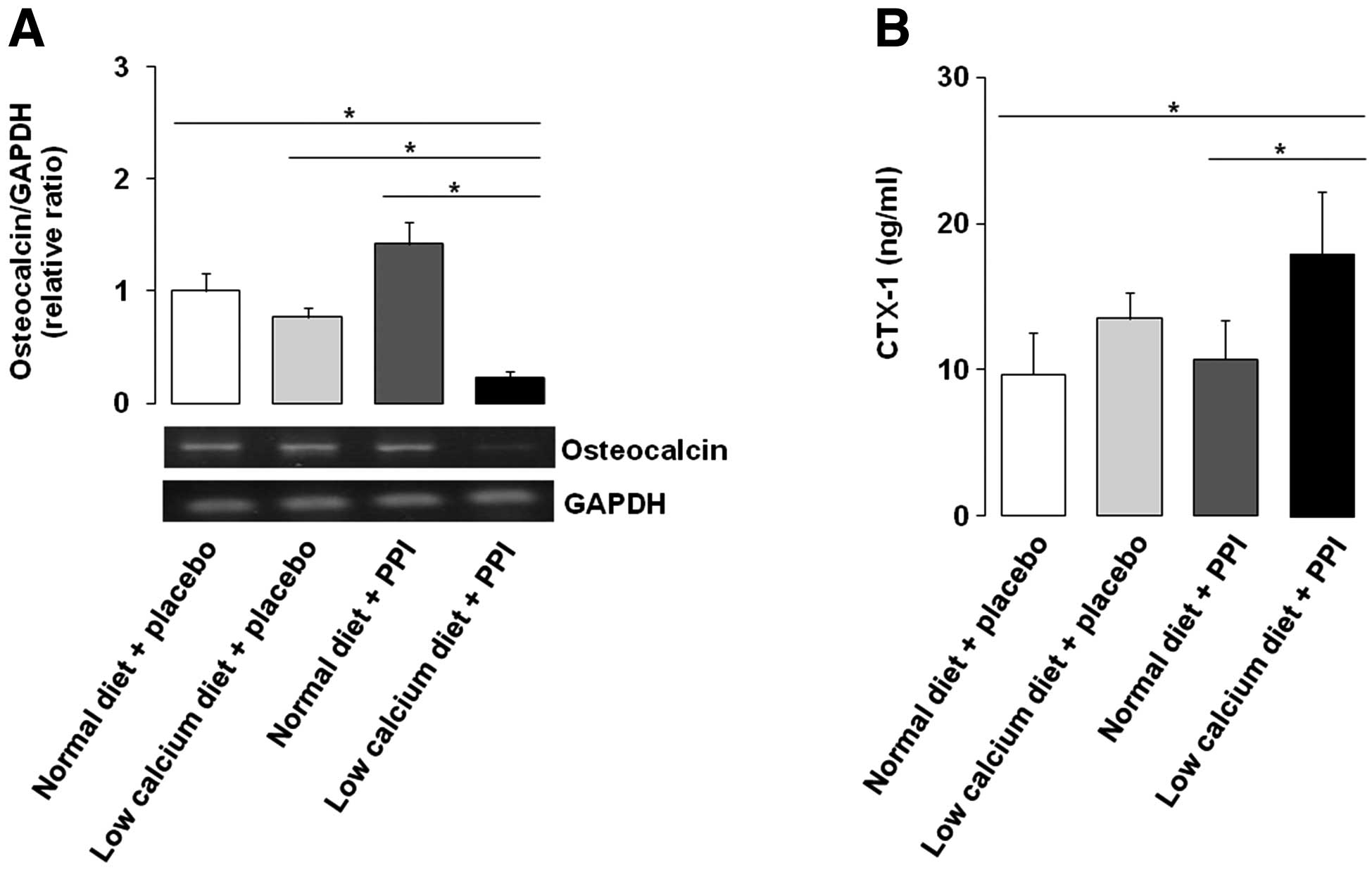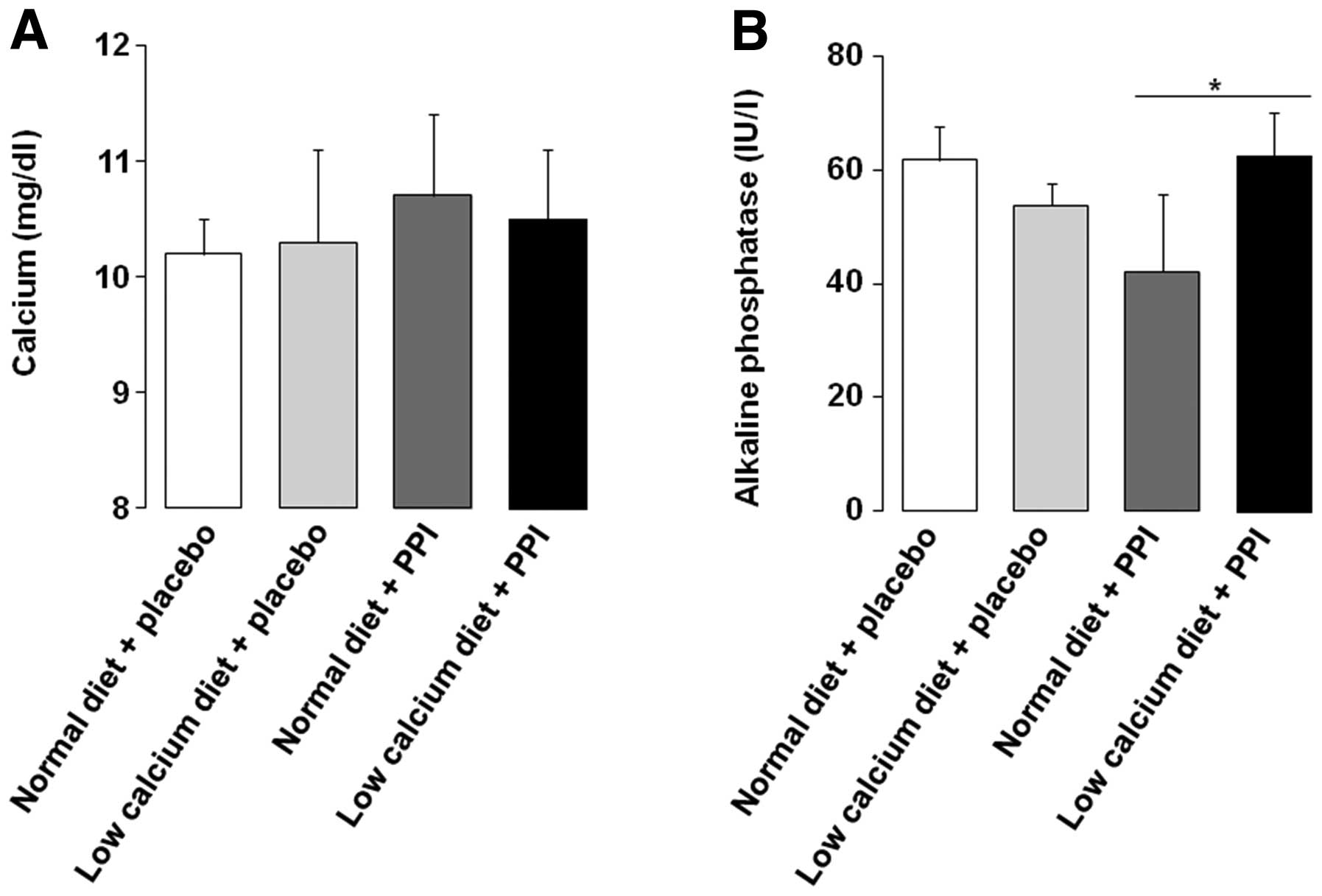|
1
|
El-Serag HB: Time trends of
gastroesophageal reflux disease: a systematic review. Clin
Gastroenterol Hepatol. 5:17–26. 2007. View Article : Google Scholar : PubMed/NCBI
|
|
2
|
DeVault KR and Castell DO: Updated
guidelines for the diagnosis and treatment of gastroesophageal
reflux disease. Am J Gastroenterol. 100:190–200. 2005. View Article : Google Scholar : PubMed/NCBI
|
|
3
|
Soll AH: Consensus conference. Medical
treatment of peptic ulcer disease Practice guidelines Practice
Parameters Committee of the American College of Gastroenterology.
JAMA. 275:622–629. 1996. View Article : Google Scholar
|
|
4
|
Talley NJ and Vakil N: Guidelines for the
management of dyspepsia. Am J Gastroenterol. 100:2324–2337. 2005.
View Article : Google Scholar : PubMed/NCBI
|
|
5
|
van Zanten SV, Armstrong D, Chiba N, et
al: Esomeprazole 40 mg once a day in patients with functional
dyspepsia: the randomized, placebo-controlled ‘ENTER’ trial. Am J
Gastroenterol. 101:2096–2106. 2006.PubMed/NCBI
|
|
6
|
Becker V, Bajbouj M, Waller K, Schmid RM
and Meining A: Clinical trial: persistent gastro-oesophageal reflux
symptoms despite standard therapy with proton pump inhibitors - a
follow-up study of intraluminal-impedance guided therapy. Aliment
Pharmacol Ther. 26:1355–1360. 2007. View Article : Google Scholar
|
|
7
|
Dent J, Brun J, Fendrick A, et al: An
evidence-based appraisal of reflux disease management - the Genval
Workshop Report. Gut. 44(Suppl 2): S1–S16. 1999. View Article : Google Scholar : PubMed/NCBI
|
|
8
|
Jacobson BC, Ferris TG, Shea TL, Mahlis
EM, Lee TH and Wang TC: Who is using chronic acid suppression
therapy and why? Am J Gastroenterol. 98:51–58. 2003. View Article : Google Scholar : PubMed/NCBI
|
|
9
|
Targownik LE, Lix LM, Metge CJ, Prior HJ,
Leung S and Leslie WD: Use of proton pump inhibitors and risk of
osteoporosis-related fractures. CMAJ. 179:319–326. 2008. View Article : Google Scholar : PubMed/NCBI
|
|
10
|
Yang YX, Lewis JD, Epstein S and Metz DC:
Long-term proton pump inhibitor therapy and risk of hip fracture.
JAMA. 296:2947–2953. 2006. View Article : Google Scholar : PubMed/NCBI
|
|
11
|
Chonan O, Takahashi R, Yasui H and
Watanuki M: Effect of L-lactic acid on calcium absorption in rats
fed omeprazole. J Nutr Sci Vitaminol. 44:473–481. 1998. View Article : Google Scholar : PubMed/NCBI
|
|
12
|
O’Connell MB, Madden DM, Murray AM, Heaney
RP and Kerzner LJ: Effects of proton pump inhibitors on calcium
carbonate absorption in women: a randomized crossover trial. Am J
Med. 118:778–781. 2005.PubMed/NCBI
|
|
13
|
Karsdal MA, Henriksen K, Sorensen MG, et
al: Acidification of the osteoclastic resorption compartment
provides insight into the coupling of bone formation to bone
resorption. Am J Pathol. 166:467–476. 2005. View Article : Google Scholar : PubMed/NCBI
|
|
14
|
Niikura K, Takeshita N and Takano M: A
vacuolar ATPase inhibitor, FR167356, prevents bone resorption in
ovariectomized rats with high potency and specificity: potential
for clinical application. J Bone Miner Res. 20:1579–1588. 2005.
View Article : Google Scholar : PubMed/NCBI
|
|
15
|
Kocsis I, Arato A, Bodánszky H, et al:
Short-term omeprazole treatment does not influence biochemical
parameters of bone turnover in children. Calcif Tissue Int.
71:129–132. 2002. View Article : Google Scholar : PubMed/NCBI
|
|
16
|
Mizunashi K, Furukawa Y, Katano K and Abe
K: Effect of omeprazole, an inhibitor of H+,K(+)-ATPase,
on bone resorption in humans. Calcif Tissue Int. 53:21–25. 1993.
View Article : Google Scholar
|
|
17
|
Suda T, Takahashi N, Udagawa N, Jimi E,
Gillespie MT and Martin TJ: Modulation of osteoclast
differentiation and function by the new members of the tumor
necrosis factor receptor and ligand families. Endocr Rev.
20:345–357. 1999. View Article : Google Scholar : PubMed/NCBI
|
|
18
|
Boyce BF and Xing L: Functions of
RANKL/RANK/OPG in bone modeling and remodeling. Arch Biochem
Biophys. 473:139–146. 2008. View Article : Google Scholar : PubMed/NCBI
|
|
19
|
Huang H, Ryu J, Ha J, et al: Osteoclast
differentiation requires TAK1 and MKK6 for NFATc1 induction and
NF-kappaB transactivation by RANKL. Cell Death Differ.
13:1879–1891. 2006. View Article : Google Scholar : PubMed/NCBI
|
|
20
|
Boyce BF and Xing L: The RANKL/RANK/OPG
pathway. Curr Osteoporos Rep. 5:98–104. 2007. View Article : Google Scholar
|
|
21
|
Kwan Tat S, Pelletier JP, Lajeunesse D,
Fahmi H, Lavigne M and Martel-Pelletier J: The differential
expression of osteoprotegerin (OPG) and receptor activator of
nuclear factor kappaB ligand (RANKL) in human osteoarthritic
subchondral bone osteoblasts is an indicator of the metabolic state
of these disease cells. Clin Exp Rheumatol. 26:295–304. 2008.
|
|
22
|
Matsuo K, Galson DL, Zhao C, et al:
Nuclear factor of activated T-cells (NFAT) rescues
osteoclastogenesis in precursors lacking c-Fos. J Biol Chem.
279:26475–26480. 2004. View Article : Google Scholar : PubMed/NCBI
|
|
23
|
Takayanagi H, Kim S, Koga T, et al:
Induction and activation of the transcription factor NFATc1 (NFAT2)
integrate RANKL signaling in terminal differentiation of
osteoclasts. Dev Cell. 3:889–901. 2002. View Article : Google Scholar : PubMed/NCBI
|
|
24
|
Yamashita T, Yao Z, Li F, et al: NF-kappaB
p50 and p52 regulate receptor activator of NF-kappaB ligand (RANKL)
and tumor necrosis factor-induced osteoclast precursor
differentiation by activating c-Fos and NFATc1. J Biol Chem.
282:18245–18253. 2007. View Article : Google Scholar
|
|
25
|
Lee BJ, Park JJ, Joo MK, et al: Effect of
proton pump inhibitor on the bone turnover in the ovariectomized
ICR mice. J Gastroenterol Hepatol. 23(Suppl 5): A102008.
|
|
26
|
Niikura K, Takeshita N and Chida N: A
novel inhibitor of vacuolar ATPase, FR202126, prevents alveolar
bone destruction in experimental periodontitis in rats. J Toxicol
Sci. 30:297–304. 2005. View Article : Google Scholar : PubMed/NCBI
|
|
27
|
Sorensen MG, Henriksen K, Schaller S and
Karsdal MA: Biochemical markers in preclinical models of
osteoporosis. Biomarkers. 12:266–286. 2007. View Article : Google Scholar : PubMed/NCBI
|
|
28
|
Cadir FO, Bicakci U, Tander B, et al:
Protective effects of vitamin E and omeprazole on the
hypoxia/reoxygenation induced intestinal injury in newborn rats.
Pediatr Surg Int. 24:809–813. 2008. View Article : Google Scholar : PubMed/NCBI
|
|
29
|
Diogo Filho A, Santos PS, Duque AS,
Cezário RC and Gontijo Filho PP: Experimental model in the
qualitative and quantitative assessment of non-Helicobacter
gastric microflora under proton pump inhibitors action. Acta Cir
Bras. 21:279–284. 2006.PubMed/NCBI
|
|
30
|
Elseweidy MM, Younis NN, Amin RS, Abdallah
FR, Fathy AM and Yousif ZA: Effect of some natural products either
alone or in combination on gastritis induced in experimental rats.
Dig Dis Sci. 53:1774–1784. 2008. View Article : Google Scholar : PubMed/NCBI
|
|
31
|
Otomo H, Sakai A, Ikeda S, et al:
Regulation of mineral-to-matrix ratio of lumbar trabecular bone in
ovariectomized rats treated with risedronate in combination with or
without vitamin K2. J Bone Miner Metab. 22:404–414. 2004.
View Article : Google Scholar : PubMed/NCBI
|
|
32
|
Song YH, Lee W, Lee CJ, Ji JH and Lee BD:
Study of bony trabecular characteristics using bone morphometry and
micro-CT. Korean J Oral Maxillofac Radiol. 37:27–33. 2007.
|














